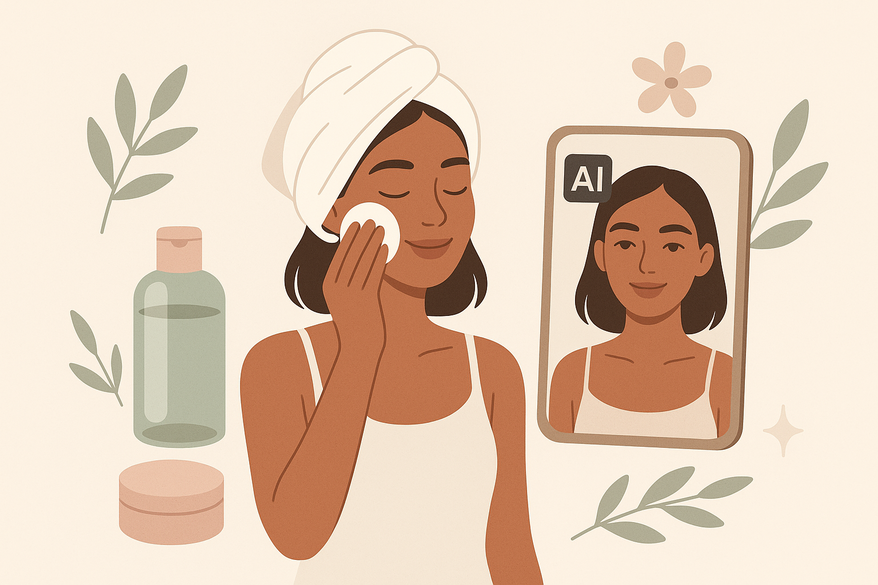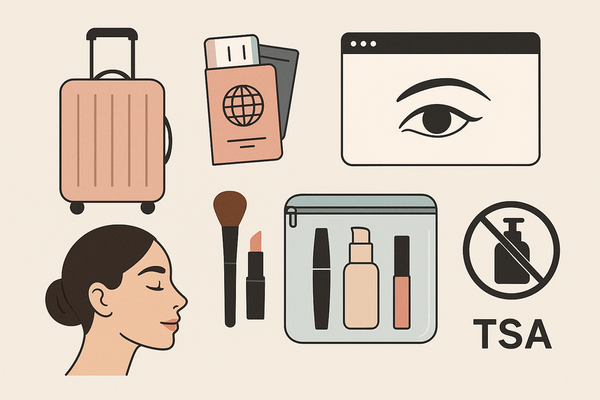Best Makeup Remover Tips: Ultimate Guide and AI Insights
Discover the best makeup remover tips for healthy skin. Learn about AI makeup generators and achieve a personalized routine for a glowing complexion.

Estimated reading time: 8 minutes
Key Takeaways
- Cleanse thoroughly: Proper makeup removal prevents clogged pores, breakouts, and premature aging.
- Use proven methods: Double cleansing and micellar water are highly effective for all skin types.
- Customize your routine: Tailor products by skin type—oily, dry, or sensitive—to maintain balance and hydration.
- Leverage AI tools: An AI Makeup Coach guide can personalize your regimen and optimize remover selection.
- Blend tradition with tech: Combining time-tested tips with AI insights elevates your skincare game.
Table of Contents
- Section 1: Understanding Makeup Removal
- Section 2: Best Makeup Remover Tips
- Section 3: Incorporating Innovative Solutions: AI Makeup Generator
- Section 4: Combining Traditional Tips with Modern Technology
- Section 5: Additional Considerations and Customized Solutions
- Conclusion
- FAQ
Section 1: Understanding Makeup Removal
What Is Makeup Removal?
Makeup removal is the process of dissolving and lifting cosmetic products from your skin. It uses cleansers, oils, or wipes to break down foundation, mascara, and more.
Why It Matters for Skin Health
- Prevents buildup of dirt, oil, and environmental pollutants.
- Allows skin’s repair cycle to function overnight.
- Keeps pores clear to reduce blackheads and whiteheads.
Residual makeup traps pollutants and accelerates skin aging. Learn more about dermatologist-approved techniques.
Common Mistakes and Their Effects
- Skipping double cleansing – Leaves residue that damages the skin barrier, increasing sensitivity and dryness. Source: makeup removing mistakes
- Rushing the cleanse – Missing the jawline, neck, and hairline causes localized breakouts and uneven texture. Source: video tutorial
- Using harsh, alcohol-based wipes – Strips natural oils, leading to irritation and flakiness. Source: dermatologist-approved techniques
- Not moisturizing after cleansing – Compromises the skin barrier and leads to tightness and peeling. Source: makeup removing mistakes
Section 2: Best Makeup Remover Tips
Subsection A: Proven Methods for Effective Makeup Removal
- Double Cleansing
– Step 1: Apply oil-based cleanser (e.g., coconut or jojoba oil) to dry skin. Massage to dissolve makeup.
– Step 2: Follow with water-based cleanser suited to skin type (foam/gel for oily; cream/oil for dry).
Research: dermatologist-approved techniques, ultimate makeup removal guide - Micellar Water
– Soak a cotton pad and press gently on skin for 5 seconds. Wipe from center outward.
– Ideal for sensitive areas like eyes and lips.
Source: dermatologist-approved techniques, Nivea makeup removal tips - Oil Cleansing
– Massage 1 tsp of a gentle oil-based cleanser over face. Emulsify with a little water, then rinse with lukewarm water.
– Great for waterproof and heavy makeup.
Sources: dermatologist-approved techniques, ultimate makeup removal guide - Cleansing Balms
– Scoop a pea-size amount and massage into skin. Wipe off with a damp cloth.
– Best for normal to dry skin types needing extra hydration.
Research: ultimate makeup removal guide - Steam Prep
– Steam face for 5 minutes over a bowl of hot water. Drape a towel over your head to trap steam.
– Opens pores to lift makeup before cleansing.
Source: ultimate makeup removal guide
Subsection B: Step-by-Step Routines
Evening Routine
- Apply cleansing balm, oil cleanser, or soaked micellar pad to dry face, focusing on eyes and lips.
- Rinse with lukewarm water; finish with a cold splash to tighten pores. Source: video tutorial
- Second cleanse with a water-based cleanser suited to your skin type. Source: ultimate makeup removal guide
- Pat dry and apply moisturizer to restore hydration. Source: makeup removing mistakes
Morning Routine
- Use a gentle, water-based cleanser to remove overnight oils and residue.
- Follow with a lightweight moisturizer and SPF.
Subsection C: Tips for Waterproof and Long-Wear Makeup
- Soak a cotton pad in micellar water or oil-based remover. Press onto lashes or lips for 10 seconds.
- Gently swipe downward; avoid tugging to protect delicate skin.
- Repeat if needed to fully dissolve waterproof formula. Research: Nivea makeup removal tips, ultimate makeup removal guide
Section 3: Incorporating Innovative Solutions: AI Makeup Generator
What Is an AI Makeup Generator?
An AI makeup generator is a digital tool that analyzes skin type, routine, and specific concerns to recommend personalized makeup application and removal strategies.
How AI Personalizes Your Routine
- Capture skin data via a selfie or questionnaire.
- Algorithm suggests optimal remover (micellar for sensitive; oil cleanser for heavy makeup).
- Offers technique tips, frequency reminders, and product pairings.
- Learns from your feedback to refine suggestions over time.
For a hands-on AI experience, Makeup Check AI uses advanced machine learning to analyze your skin and recommend removal techniques.
Real-World Examples
- Case Study: A user struggled with eye makeup residue. The AI makeup generator recommended a specific cleansing balm and shared a short video tutorial for waterproof mascara removal.
- Platform Feature: Tracks weekly usage and skin improvements, adjusting routines every two weeks based on observed changes.
Section 4: Combining Traditional Tips with Modern Technology
4-Step Integration Plan
- Begin with proven makeup remover tips (double cleansing, micellar water).
- Input personal skin details into the AI makeup generator.
- Compare AI’s product and technique suggestions with your current routine.
- Implement changes (e.g., swap alcohol wipes for a cleansing balm) and track results over 4–6 weeks.
Product-Selection Advice by Skin Type
- Oily Skin: Lightweight, non-comedogenic foam or gel cleansers. Source: ultimate makeup removal guide
- Dry Skin: Rich, hydrating balms or oils; look for ingredients like shea butter. Source: ultimate makeup removal guide
- Sensitive Skin: Use gentle, fragrance-free products; micellar water with minimal surfactants. Learn more in sensitive skin makeup tips.
Section 5: Additional Considerations and Customized Solutions
Tailoring Routines by Skin Type
- Oily: Avoid thick oils; choose oil-free cleansers and clarifying micellar waters. Source: ultimate makeup removal guide
- Dry: Prioritize balms and oils to lock in moisture; follow with a ceramide-rich moisturizer. Source: ultimate makeup removal guide
- Sensitive: Use fragrance-free products; micellar water with minimal surfactants. Source: dermatologist-approved techniques
Recommended AI Beauty Platforms
- SkinAI Analyzer – An online quiz plus photo analysis offering product recommendations and removal routines.
- AI Skin Scan by Brand B – A mobile app providing weekly routine updates, reminders, and progress tracking.
Conclusion
Consistent, thorough removal protects your skin’s health and promotes a clear, glowing complexion. By pairing proven methods—like double cleansing and micellar water—with personalized insights from an AI makeup generator, you create a routine that adapts to your needs. Implement these tips, track your skin’s response, and share your feedback. Your journey to radiant skin starts with every cleanse.
FAQ
How often should I double cleanse?
Double cleanse every evening if you wear makeup or sunscreen. Skip the oil cleanse in the morning and stick to a gentle water-based cleanser to remove overnight oils.
Can I use micellar water alone?
Micellar water is great for quick touch-ups or sensitive skin, but it may not remove heavy or waterproof makeup completely. Follow up with a second cleanse for a thorough clean.
Is an AI makeup generator worth it?
AI tools personalize remover recommendations, routine frequency, and product choices based on your skin data. They’re most useful if you enjoy data-driven routines and want ongoing optimization.




